| DC66113 |
DSPE-PEG-FA
Featured
|
Phospholipid polyethylene glycol folate (dspe-peg-fa), carboxyl group and amino group form amide bond. This reaction makes folate ligand attach to protein, antibody, peptide or particle surface. Pegylated folate has good water solubility and bioactivity. Folate functionalized substrates have been used for targeted drug delivery, imaging and bioassay. DSPE (1,2-distearyl-sn-glycerin-3-phosphate ethanolamine) is a saturated 18 carbon phospholipid, which is commonly used in the synthesis of liposomes. Polyethylene glycol (PEG) - coupled DSPE is hydrophilic and can be used for drug delivery, gene transfection and biomolecular modification. |
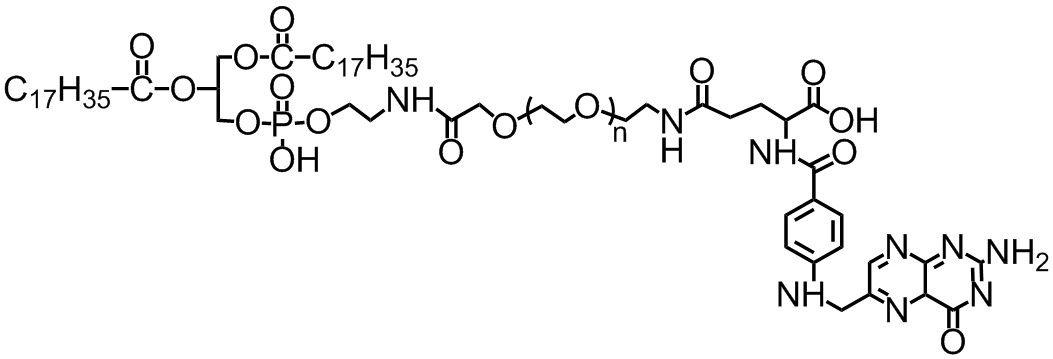
|
| DC66114 |
FAPI-46
Featured
|
FAPI-46 is a highly promising FAP-targeted radiotracer with superior tumor uptake and prolonged accumulation, making it an excellent tool for imaging a wide range of cancers. Its versatility, combined with its potential for theragnostic applications, positions FAPI-46 as a valuable asset in the field of oncology, enabling improved diagnosis, staging, and treatment monitoring for patients with FAP-expressing tumors. |
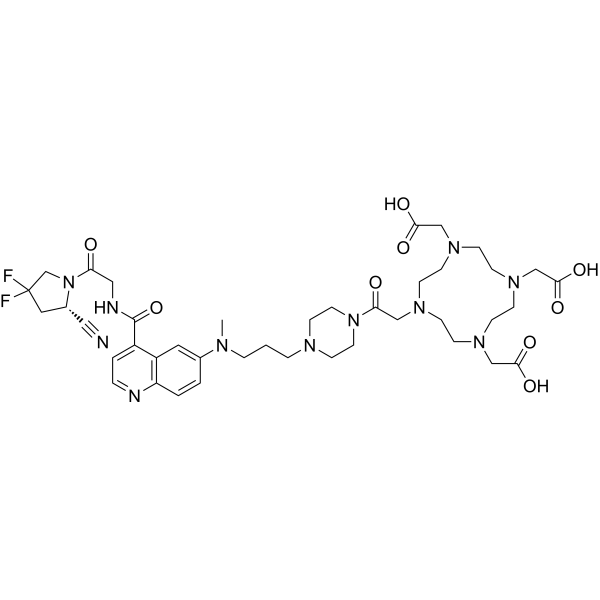
|
| DC66115 |
DSPE-PEG-OH
Featured
|
DSPE-PEG-OH, MW 2000 is a PEG-based PROTAC linker that can be used in the synthesis of PROTACs. Additionally, DSPE-PEG-OH, MW 2000 can also be used for drug delivery. |

|
| DC66116 |
DSPE-PEG-FITC
Featured
|
DSPE-PEG-FITC, is a fluorescein attached PEG lipid. It can be used to prepare liposomes as drug carrier in targeted drug delivery. The polymer is modified with fluorescein (green) dye which can be used for staining cells, tissues, biomarkers, or nanoparticles. |

|
| DC66117 |
DSPE-PEG-Rhodamine
Featured
|
DSPE-PEG-FITC is a fluorescein attached PEG lipid. It can be used to prepare liposomes as drug carrier in targeted drug delivery. The polymer is modified with fluorescein (green) dye which can be used for staining cells, tissues, biomarkers, or nanoparticles. |
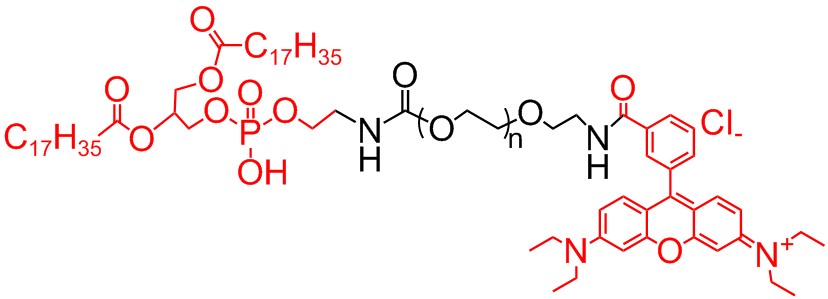
|
| DC66118 |
DSPE-PEG-Galactose
Featured
|
Long circulating liposomes were obtained by modifying the surface of liposomes with polyethylene glycol, which could prolong the half-life of liposomes, improve its stability in blood circulation, and change the biological distribution of liposomes. |
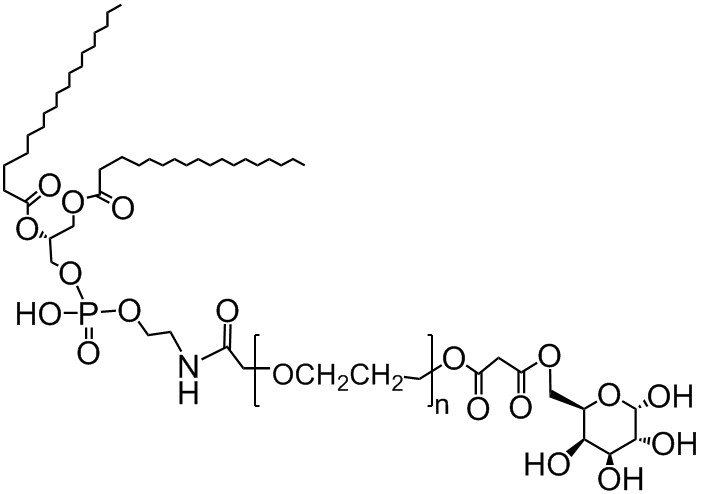
|
| DC66119 |
DSPE-MPEG
Featured
|
2-Distearoyl-sn-Glycero-3-Phosphoethanolamine(DSPE) conjugated polyethylene glycol is a combination of phospholipid and polyethylene glycol, which has hydrophilicity and hydrophobicity. Polyethylene glycol phospholipid liposomes can be used for drug delivery, gene transfection and vaccine delivery. Pegylated phospholipids can significantly improve blood circulation time and stabilize drug encapsulation. These materials can also be used for targeted drug delivery by modifying ligands with target surfaces such as antibodies and peptides,Liposomes. |
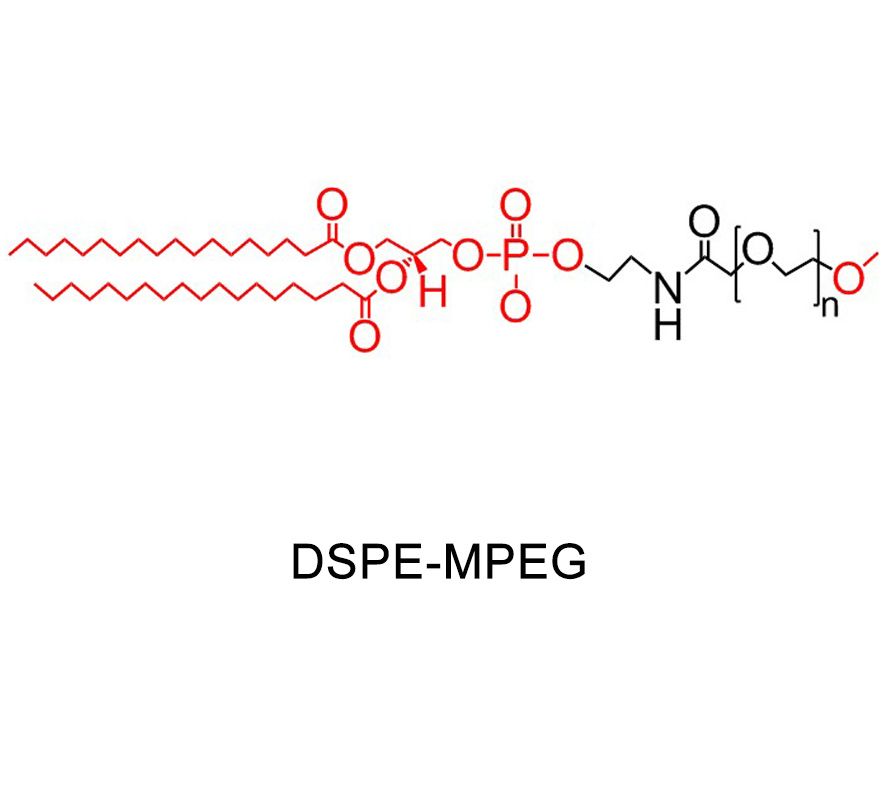
|
| DC66120 |
DSPE-SE-SE-mPEG
Featured
|
The diselenide bond is an important chemical bond formed by two selenium atoms sharing a pair of electrons. Because the electronegativity of selenium atom is low, the bond energy of diselenide bond is low, so it has the characteristics of strong reactivity and easy to break. In polymer materials, the dynamic chemical properties of diselenide bond make it have a wide application prospect.
The dynamic chemical properties of diselenide bond are mainly manifested in its easy fracture and formation. In polymer materials, diselenide bond fracture can be achieved by external stimuli (such as light, heat, electricity, etc.) or chemical reactions. For example, through the action of photosensitizer initiator, polymer materials containing diselenide bonds can be broken under ultraviolet irradiation, so as to achieve controlled degradation of materials.
In addition to breaking, diselenide bonds can also form new bonds. In polymer materials, diselenide bonds can form new bonds by free radical reaction or nucleophilic substitution reaction. For example, through free radical reactions, polymer materials containing diselenide bonds can be reacted with other free radical reactants to form new bonds and achieve cross-linking or modification of materials. In addition, diselenide bonds can also form new bonds through nucleophilic substitution reactions, such as in the presence of nucleophilic reagents, diselenide bonds can be replaced, so as to achieve the functionalization or modification of materials. |

|
| DC66121 |
DSPE-SE-SE-PEG-NHS
Featured
|
|

|
| DC66122 |
DSPE-SE-SE-PEG-MAL
Featured
|
|

|
| DC66123 |
DSPE-SE-SE-PEG-NH2
Featured
|
|

|
| DC66124 |
DSPE-SE-SE-PEG-SH
Featured
|
|

|
| DC66125 |
DSPE-SE-SE-PEG-COOH
Featured
|
|

|
| DC66126 |
DSPE-SS-PEG-N3
Featured
|
Phospholipids are commonly used polymeric gene carriers. DSPE with high molecular weight can effectively compound DNA, and has strong buffered capacity under endosomal pH conditions, showing good transfection efficiency for a variety of cells. However,DAPE is not easily degraded, and high molecular weight DAPE as a gene carrier may lead to short - or long-term cytotoxicity. |

|
| DC66127 |
DSPE-SS-PEG-Galactose
Featured
|
|

|
| DC66128 |
DSPE-SS-PEG-Mannose
Featured
|
Phospholipids are commonly used polymeric gene carriers. DSPE with high molecular weight can effectively compound DNA, and has strong buffered capacity under endosomal pH conditions, showing good transfection efficiency for a variety of cells. However,DAPE is not easily degraded, and high molecular weight DAPE as a gene carrier may lead to short - or long-term cytotoxicity. |

|
| DC60589 |
ABBV-CLS-484 (AC-484)
Featured
|
ABBV-CLS-484 (AC-484) is a novel PTPN2/N1 inhibitor with IC50 of 2.2 nM. AC-484 improves oral bioavailability across different species. |
.jpg)
|
| DC66129 |
Hynic-toc
Featured
|
|
.png)
|
| DC66130 |
Oclacitinib maleate
Featured
|
Oclacitinib, also known as PF03394197, is a novel Janus kinase inhibitor with activity against cytokines involved in allergy. Oclacitinib inhibited JAK family members by 50% at concentrations (IC50 's) ranging from 10 to 99 nM and did not inhibit a panel of 38 non-JAK kinases (IC50 's > 1000 nm). Oclacitinib was most potent at inhibiting JAK1 (IC50 = 10 nm). Oclacitinib also inhibited the function of JAK1-dependent cytokines involved in allergy and inflammation (IL-2, IL-4, IL-6, and IL-13) as well as pruritus (IL-31) at IC50 's ranging from 36 to 249 nM. |
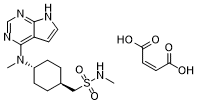
|
| DC66131 |
DSPE-SS-PEG-CY3
Featured
|
|

|
| DC66132 |
DSPE-SS-PEG-CY7
Featured
|
|

|
| DC66133 |
DSPE-SS-PEG-CY5.5
Featured
|
|

|
| DC66134 |
DSPE-SS-PEG-CY5
Featured
|
|

|
| DC66135 |
DSPE-SS-PEG-Silane
Featured
|
|

|
| DC66136 |
DSPE-SS-PEG-CHO
Featured
|
|

|
| DC66137 |
DSPE-SS-PEG-OPSS
Featured
|
|

|
| DC66138 |
DSPE-SS-PEG-RB
Featured
|
|

|
| DC66139 |
DSPE-SS-PEG-Biotin
Featured
|
|

|
| DC66140 |
DSPE-SS-PEG-FA
Featured
|
|

|
| DC66141 |
DSPE-SS-PEG-COOH
Featured
|
|

|
















.jpg)
.png)











